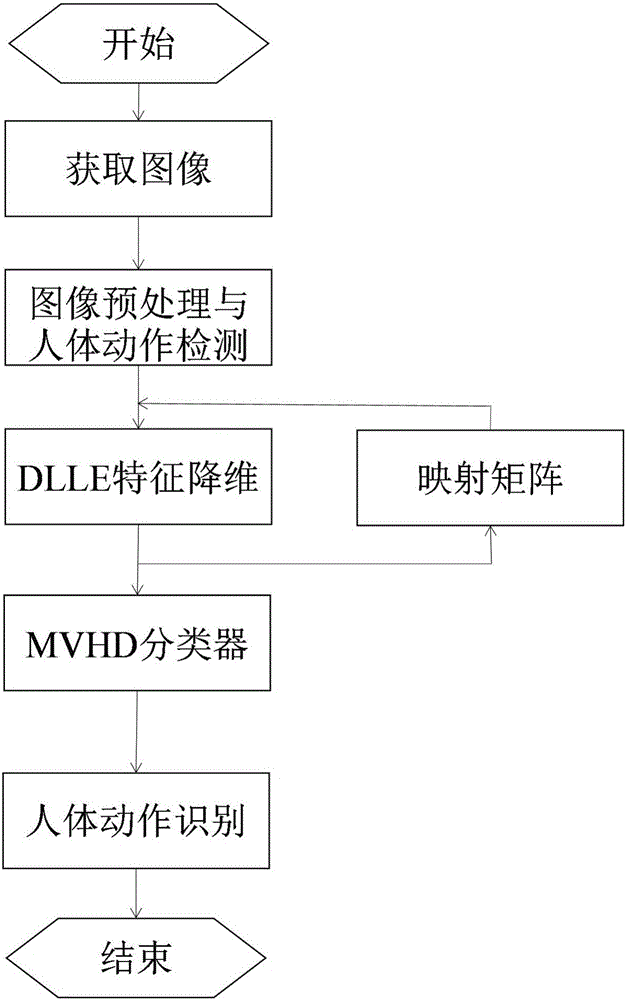DLLE model-based data dimension reduction and characteristic understanding method
A data dimensionality reduction and low-dimensional feature technology, applied in the field of computer vision, can solve the problems of human low-dimensional manifold structure vector deviation, affecting the recognition effect and robustness, etc., to improve the feature recognition effect, improve the recognition rate, eliminate The effect of the interference of redundant images
- Summary
- Abstract
- Description
- Claims
- Application Information
AI Technical Summary
Problems solved by technology
Method used
Image
Examples
Embodiment Construction
[0066] Below in conjunction with accompanying drawing, the patent of the present invention is described in further detail.
[0067] The flow chart of low-dimensional features based on DLLE model in human action recognition is attached figure 1 As shown, it specifically includes the following steps:
[0068] Step 1, get the image.
[0069] Step 2, image preprocessing and human motion detection.
[0070] The first step in the motion feature recognition problem is to preprocess video images and detect moving target images with high quality from video image sequences. High-quality moving target extraction results play a fundamental role in subsequent research on moving feature extraction and classification recognition.
[0071] Step 2.1, get the video sequence.
[0072] Step 2.2, human action extraction.
[0073] Step 2.3, perform distance transformation on the binarized image.
[0074] The Euclidean distance is used to participate in the distance transformation, and the Euc...
PUM
 Login to View More
Login to View More Abstract
Description
Claims
Application Information
 Login to View More
Login to View More - R&D
- Intellectual Property
- Life Sciences
- Materials
- Tech Scout
- Unparalleled Data Quality
- Higher Quality Content
- 60% Fewer Hallucinations
Browse by: Latest US Patents, China's latest patents, Technical Efficacy Thesaurus, Application Domain, Technology Topic, Popular Technical Reports.
© 2025 PatSnap. All rights reserved.Legal|Privacy policy|Modern Slavery Act Transparency Statement|Sitemap|About US| Contact US: help@patsnap.com



